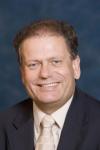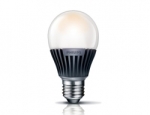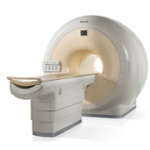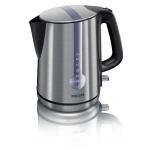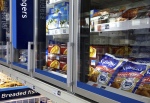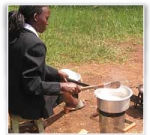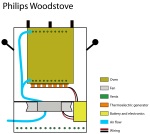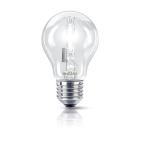Filed under: Best Practices in The Netherlands | Tags: De Windvogel, Dutch Green Building Council, Eneco, Renewable Energy, Solar Panels, Windmills, Zeekracht
The Dutch energy provider Eneco want to supply 100% renewable energy by 2030, of which 70% generated by its own facilities. 30% is expected to be generated decentrally by households and enterprises. New technical capacities (such as smart grids) are under development and new business models are being explored.
Martijn Verbeek is Manager Sustainable Innovation at the Dutch Energy Provider Eneco
Eneco is one of the top 3 energy providers in the Netherlands. The company has been founded in 1995 from a merger of local energy companies (Rotterdam, The Hague and Dordrecht). The shares of the company are now owned by 60 Dutch municipalities (1). Enecos Head Office is located in Rotterdam. The company employs 7,000 employees and creates an annual turnover of 5,2 billion euros (2009) (2).
The Eneco Group consists of the Energy Company, with the business units Eneco Supply (Business & Retail in the Netherlands and Belgium), Éneco Installation Companies, Eneco Energy Trade, Eneco Heat Companies, Eneco Wind, Eneco Solar, Bio & Hydro and Eneco Strategic Assets and Joulz (infrastructure company) and Stedin (gas and electricity network management). (Energy Trade is trading energy and carbon emissions, see also the earlier article about Philips and the joint project Luz Verde).
Within the Eneco Energy Company, the Departments Eneco Wind and Eneco Solar, Bio & Hydro are responsible for the sustainable production strategy, both large-scale as well as decentralised projects, based on energy created by wind, biomass, sun and water.


Eneco initiates the development of large-scale and decentralised renewable energy projects such as solar energy and wind energy sites
Martijn Verbeek is Manager Sustainable Innovation Retail
Verbeek holds a degree in Business Economics and has covered different marketing, sales and business development positions in the Energy and Telecom market. Verbeek was appointed as Manager Consultant Sustainable Energy as of 2007. In this role he is leading development of renewable energy projects in close cooperation with private and public partners as well as knowledge institutes.
1. What are the CSR & Sustainability Objectives of Eneco ?
The annual report of 2008 states : Eneco wants to have a leading position in North-West Europe in future oriented sustainable energy supply, energy available and affordable for everybody. It wants to be a source of inspiration to others by demonstrating that a swift transition for fossil to sustainable energy is both technically possible and viable’. (4)
To reach the position of thé exemplary renewable energy provider, Eneco has chosen 3 strategy pillars (3) :
1. Become leading in Sustainable Energy Solutions : As of 2012 20%, as of 2020 70% and in 2030 100% of the energy of Eneco should be generated in a sustainable matter, by large-scale and decentralised energy solutions, expanding district heating networks and facilitating third party sustainable energy products. Eneco will use wind-, solar-, bio- and hydro-energy combined in the first decades with gasplants. In 2008, 33% of Eneco’s energy was generated by its own plants; in 2009 this was 47.5% (52.5% is bought from other suppliers), with the ambition to develop this to 70% in 2012, Therefore, the switch is feasible, explains Verbeek.

Examples of the various renewable energy projects developed and maintained by Eneco in Netherlands and Belgium: solar, wind, bio, geothermic energy projects. (5).
2. Strengthening the vertical integration : increasing gas facilities as the stepping stone towards full renewable energies, positioning trade of gas as a core activity. Eneco would like to keep control over the whole value chain, which means it wants to be involved in energy generating, trade and distribution. See picture below.

The Energy Value chain with activities of Eneco Energy Company (Energiebedrijf), Joulz (infrastructure/distribution) and Stedin (gas and electricity network management) (5)
3. Excellent Supply Activities : cost control & working capital, customer satisfaction
To illustrate Eneco’s strategy, the company has made a firm statement about the, to its opinion, insufficient Dutch governmental commitments with respect to renewable energies by not signing the Energy Convenant in 2008. This convenant was drafted between the Dutch Government and Energy Providers. Thought the convenant contains a calendar for wind and solar energy, Eneco opposes the choice for coal plants instead of gas as a transitional electricity means. Eneco believes that The The Netherlands is making itself too much dependant on the large-scale implementation of new coal plants which will be eventually much more expensive and worse for the environment than gas, the alternative transition energy.
2. How does Sustainability lead to Innovation at Eneco ?
Verbeek has identified seven trends in the energy sector that are all endorsing innovation and new business at Eneco :
1. Energy supply is moving towards a decentralised energy exploitation model : Households, companies and energy providers will start to generate locally their energy. Solar panels, wind mills, heath and warmth storage and heath and energy units will reduce the total volumes of electricity and gas to be transported to the individual homes and enterprises. Some homes and enterprises will even generate more energy than needed. Energy infrastructure providers will be generating renewable energy and will also be obliged to buy the ‘surplus’.

Example of decentralised energy generation by a Combined Heath and Power (CH) system that produces heath and energy for a house or even a district (6).
2. Real time energy information : It will be important to have real time information available on energy consumption and generation. This is needed for a proper billing, but also for informing customers the right price and energy mix at a given time (develop consciousness in energy use). Interactive thermostats including a display will become common practice to inform the users about their energy spend (KwH and costs). These will be connected to the in-house energy meter and/or the central heating system. Intelligent functions of this new displays are foreseen like a central meter and switch that automatically switches on the washing machine when solar energy is locally produced and energy cost are relatively low.
3. Upcoming electrical cars in cities. Eneco is adapting to the trend of the upcoming electrical cars that would need energy loading points in the city. The first four energy spots NRGSpot’ have been created in Rotterdam (7). Eneco is playing a leading role in the development of EV, with the NRGSpot that hold both a load- and payment platform.


The Eneco NRG Spot, loading points for electrical cars and scooters in Rotterdam (7)
4. Co-creation with customers. Verbeek explains how Eneco is using interactive sessions with customers to develop new solutions to define user requirements and to create citizen acceptance. An example is the configuration of the windmills of the newly built ‘Prines Amaliapark’ 23 km outside the coast of IJmuiden (60 turbines, 120 MW, 400 MWh/a). Citizens and companies have advised about the formation of the mills with respect to the scenery and harbour entrance. The park is generating about 1,5% of the total Energy supply, enough for more than 125.000 of Eneco customers (9). Comparable consultings with households that live in the direct neighbourhood take place in onshore Wind projects.

Prinses Amaliapark, 120 MW, 23 km outside Dutch coast, west of Amsterdam (8)
5. Cooperation with civilian associations. Citizens and companies can make the choice to purchase only wind energy by choosing Eneco’s ‘Windstroom’ (11) that garantees 100% Dutch wind mill electricity. With the product ‘MijnWindstroom’, Eneco is targeting the households that live in the surroundings of on-shore Windparks, by supplying them the Wind energy from these specific windturbines.
Eneco is also supporting associations of citizens, companies and public organisations aiming for a self supply with renewable energy. An example is the ‘Windvogel’ (wind bird) (12). The association is managing 4 windmills in region of Zuid-Holland, west of Utrecht. Costs are beared by the citizens who are members of the association, subventions and loans. An estimation is that with the windmills about 1600 households can be supplied with renewable energy. The association has started with local organisations and Eneco a pilot for selfsupply. Eneco is facilitating this by offering supply, knowledge and services. Simultaneously it is increasing its knowledge about this new kind of public-private-citizen initiatives that are likely to become common in the future.
Another example is the participation of residents in The Hague in the Scheveningen Windturbine, bundled with the supply of the wind energy it generates (opening May 19th).

Cooperative association ‘De Windvogel’ that aims to create renewable energy projects that are self supplying with one of its windmills ‘De Windvogel’ in Bodegraven (12)
Another example is the cooperation with ‘Zeekracht’. This association is also initiated by civilians together with the ONG ‘Natuur & Milieu’ and business partners ASN Bank and Eneco. It has a high ambition to speed up the development of new windmill parks (6000 MWh) in the North Sea to ensure the future energy supply in The Netherlands (13). The initiative has been endorsed by a well known Dutch television man, Beau van Erven Dorven. The world famous architect Rem Koolhaas (known from Parc de la Vilette 1982, Dutch Kunsthal 1992) has developed the lay-out of an international supergrid, that connects the offshore Windparks in the North Sea. Dutch citizens can become Zeekracht member and owner as of 10 euro per year. Zie ook http://www.zeekracht.nl/node/98



Zeekracht Association of NGO ‘Natuur en Milieu’, civilians, ASN Bank and Eneco, endorsed by Famous Dutch Television Personality Beau van Erven Dorven

Design of an Offshore supergrid, by Rem Koolhaas (OMA)
‘Zeekracht’ Cooperation of Dutch civilian-members developing off-shore windmills endorsed by Dutch TV personality Beau van Erven Dorven (left) (13)
6. Cooperation with municipalities. Eneco has its roots in municipalities structures and still cooperating closely with local bodies. In The Hague West, for instance, it is actively participating in the project to heat over 4000 houses by using the earth warmth found 2,2 km below surface, reducing CO2 emissions of 5000 ktons/year (14). See also the article about the Municipality of The Hague. Other projects are the renovations of the district heating system (Delft), windmills (The Hague) and Barendrecht (sun energy).

Eneco is one of the partners of The Hague Geothermic project to heat 4000 houses by using earth warmth of 2,2 km depth (14).
7. Cooperation with Industry Partners. The last of the seven trends mentioned is the increasing cooperation between industry partners that aim for holistic solutions. For instance, in Libramont (Belgium) Eneco realised together with Bio Energie Europe a sustainable energy island for industrial partner l’Oreal. In 2009 the installation was started to deliver all electricity and heat that l’Oreal needs for its factories in the Ardennes. The installations (http://www.bioenergie-libramont.eu/nl/) run on biogas made out of biomass achieved from the nearby farmers.

Biogasinstallation in Libramont (B)
Eneco is one of the founders of the Dutch Green Building Council, that has the objective to communicate about sustainable business solutions and endorse BREEAM NL as the Dutch standard for sustainable properly development.
The Dutch Green Building Council, official member of the World Green Business Council
3. What are the effects of the economical crisis on the Sustainability policy ?
Enecos Sustainability Policies are not changed because of the economical crises. The plans to invest in central and decentral renewable energy projects remain.
Though competitors have recently been bought by foreign energy companies (Nuon bought by the Swedish Vattenfall and Essent by the German e.ON), Eneco is pursuing an independent strategy. . It has made a clear choice and will focus on investments in solar, wind, biomass energy projects. Which means it won’t invest in new coal plants.
4. Which trends do you foresee for the near future ?
Eneco’s role will develop from an energy supplier to a facilitator. Energy suppliers have to be prepared for decentrally generated energy, in cooperation with customers. First of all, this means a technological challenge. New features need to be added to the core energy network including real time information supply. Secondly, the customer relationship will change incredibly. Eneco will need to facilitate, assist and help its customers. The provider will become more and more an energy consultant, advising its customers on their energy and heat projects.
Different factors remain difficult to predict : the speed of which fossil fuels become scarce, the governmental subventions and the performance coefficients of new technologies. The factors will largely influence the performance and cost, and thus the adaption of renewable energies. No matter what the speed or governmental subventions, Verbeek is convinced that Eneco will be very well placed thanks to its early experiences with renewable energy projects currently undertaken.
Sources : 1 : Eneco Corporate Brochure ‘Moving Ahead’, 2009 ; 2. http://corporatenl.eneco.nl/ ; 3. http://corporateuk.eneco.nl/outlook_and_strategy/standpoints/Pages/EnergySectorAgreement.aspx; 4. Eneco Holding Annual Report 2008 ; 5. Eneco Algemene Presentatie 2009, Duurzame Energie voorziening voor iedereen, 6. http://www.greenspec.co.uk/html/energy/micro_chp.html 7. http://www.nrgspot.nl; 8. http://www.prinsesamaliawindpark.eu ; 9. http://nl.odemagazine.com/doc/0122/Eneco-vindt-zichzelf-opnieuw-uit/ 10. www.favelafabric.coml; 11. http://thuis.eneco.nl/energieproducten/stroomproducten/ Pages/windstroom.aspxl; 12. www.windvogel.nl; 13. www.zeekracht.nl ; 14. http://www.duurzaamdenhaag.nl/a/doc.asp?docid=195
Filed under: Best Practices in The Netherlands | Tags: Eco-Design, Eneco, Green Focal Areas, Green Product Development, Healthcare, High Tech Campus, ING Wholesale, Lifestyle, Lighting, Luz Verde, Philips, World Green Business Council
Henk de Bruin, Senior VP Global Head of Sustainability at Philips
Royal Philips Electronics, headquartered in The Netherlands, employs 118,000 employees spread over 60 countries worldwide, generating an annual turnover of 26 billion (2008). The company is offering products and services in healthcare, lifestyle and lighting (1).
Product Examples : (1) Philips Healthcare : ‘Ambient Experience’ : an environment with diagnostic instruments (like MRI scans) and lights that generate a welcoming and comforting hospital environment ; (2) Philips Lifestyle (Consumer Products) : a digital photoframe and DirectLife, an instrument to measure the daily fysical activities and (3) Philips Lighting : Master LED light, 25.000 hours lifespan, designed to replace conventional 25 or 40 Watt lights bulbs.
‘Corporate Responsible Behaviour is a business opportunity to Philips’, says Henk de Bruin, Head of the Corporate Sustainability Departmentat Philips, located in The Netherlands. ‘If we manage Sustainability well, we will generate new business and revenues’.
De Bruin explains the role of Sustainability at Philips, how the company has developed its Sustainability policies over the years and how it has become an internal driving force of Green Product Development and Innovation.
The Philips Board of Management started a Corporate Environmental & Energy department in the seventies, following the report of Rome (1972). The departments first objectives were to overview the companies industrial processes and reduce their ecological impact by reeucing energy consumption, waste, water usage and emissions. Henk de Bruin took over the position of Head of the Philips Corporate Environmental & Energy Department in 1993, which was transformed to the the current Sustainability department in 2001. Philips CEO’s Timmer (1990 – 1996), Boonstra (1996-2001) and Kleisterlee (as of 2001) have been proven to be strong supporters of Philips Sustainability Policies.
1. What are Corporate Responsibility Objectives of Philips ?
The Sustainability Activities of Philips have diversified since the seventies : After an initial focus on industrial processes, Philips started in 1994 with four-year action programs of Corporate Responsibility with measurable targets (2). Eco-Design Procedures were introduced to all Divisions in 1994 and extended in 1998 with a company roadmap for structured green product development. As of 1999 Philips produced it first Environmental annual report, broadened the scope towards a Sustainability report in 2002 which has been integrated in the companies Annual Report since 2008.
Philips Board of Management has chosen its specific Sustainability objectives, prepared by the Corporate Sustainability Office (CSO, 6 FTE) in cooperation with the Business Sectors (Healthcare, Lighting, Consumer Lifestyle)counterparts. The CSO team is closely in contact with other industrial sustainability front-running companies, the academic worlds, NGOs, government, investors and consumer organizations..
Sustainability has been defined as an important condition for successful business at Philips. Notably in the areas ‘Energy Efficiency’ and ‘Healthcare’ Philips want to maintain its front running position. The Sustainability Plans EcoVision III (scope 2006- 2009) and EcoVision IV (scope 2007- 2012 have further detailed out the companies Sustainability goals. Bottom line : Philips aims to improve the environmental impact of its processes andits products.
The Key CR and Sustainability Goals of Philips :
- 25% energy efficiency impovement by 2012 (compared to 2007)
- 25% carbon footprint reduction by 2012 (compared to 2007)
- 30% of Philips Product Sales to be generated by ‘Green Products’ (*) by 2012
- Double investments in Green Innovations (underlying technologies) up to 1 billion euros.(compared to 2007)
* The six Philips Green Focal Areas for Green Products : Energy Efficiency, Packaging, Hazardous Substances, Weight, Recycling & Disposal, Lifetime Reliability. ‘Green products’ have a 10% higher environmental performance in one or more of the ‘Green Focal Areas’ then the reference product (a predecessor-Philips product or competitor product).
Sustainability Goals translated into personal target. The Sustainability objectives are embedded in Philips standard procedures and as such integral part of the managers yearly appraisals, where relevant..
2. How does CSR contribute to Innovation ?
De Bruin distinguishes different areas to drive Sustainable Innovation: (1) Structured green product development, (2) Employee engagement, (3) Livable cities, energy consumption reduction and safety improvement in city areas, (4) Cooperation with NGO’s (5) New business model development and (6) Open innovation.
1. Green Product Development. Procedures for Green Product Development have been implemented in all Philips Divisions supported by internally provided EcoDesign tools. To develop its methodologies for Eco-Design, Philips cooperates with academics, for instance with the University of Technology in Delft, faculty of Industrial Design Engineering. Over 2008, the level of Green Sales was almost 23% of Philips total revenues, with an expected trend upwards for the year 2009. Examples of Green Product Innovations at Philips Healthcare, Philips Lifestyle and Philips Lighting :
Philips Health Green Product Development Example : MRCI scan Achieva 1.5T offers a 28% energy reduction and a life cycle assessment improvement of 10% compared to its predecessor. By applying smart power management, amplifier and cooling technology and specific software only energy is consumed when really needed.
Philips Lifestyle Green Product Development Example : Philips Green Kettle, launched in the UK, is designed to ‘Boil what you Need’ and clearly showing how much water is being boiled, preventing full kettles to be boiled wasting energy. Energy consumption savings are estimated up to 66%.
Philips Lighting examples of Green Product Development : (1) Freezer Lighting, implemented in 1100 UK shops at Tesco and Sainsbury, creates 75% energy efficiency with a strong resistance to extreme temperature condition, improving longevity and reliability of freezer displays (3) ; (2) Based on Eco-Design principles, Philips has refurbished the Pont de la Buillotiere in Lyon with new lamps and gears, resulting in energy efficiency savings of almost 50%. Photocredits : Panoramio.com. ; (3) Generali Office Lighting: the first office entirely lighted with LED lights of Philips Lighting was the Generali Office at the Champs Elysees in Paris, creating a very pleasant atmosphere with lights with maintenance costs because of the very long lifetime of LEDs.
2. Employee engagement. ‘Employee Engagement’ is a key success factor for Sustainable Business development, according to de Bruin. Three questions of the Annual Philips Employee Engagement Survey are related to Philips Sustainability Implementation and Ambitions. De Bruin is happy to announce that the majority of the Philips employees support Philips Sustainability ambitions.
3. Cooperation with NGO’s. Philips wants to play a role in the developing countries by providing energy efficiency solutions. Cooperation with international governmental organisations and NGOs is important to Philips, to have continuous feedback – and avoids media conflicts, as well as offers access to knowledge about ‘Base of Pyramid’ solutions in developing countries. Lastly, NGO’s could become Philips business partner. An example of a project inspired by cooperation with NGO’s is the ‘Woodstove ’pilot project of Philips Research. The Woodstove has beentested in India, (4) and was commercially rolled out in the Indian market in the last quarter of 2009 :
Philips Woodstove Pilot in India : The Woodstove is using traditional coal or wood and contains a fan with rechargeable battery that circulates air. Cooking conditions are improved significantly : higher cooking temperature, shorter cooking time and an energy efficiency reduction of 50%.
4. Livable cities: Partnerships to reduce energy use in city areas and improve safety. Philips has recently joined the World Green Building Council (WGB) joining other multinationals to discuss Energy Efficient Building Solutions. Philips has identified cities as major energy consumer (70% of global energy consumption). Over 60% of all lightning installed in the EU is based on legacy and old technology. The changeover rate to new lighting technologies (as Philips it calles ‘the Green Switch) is unfortunately very slow : street lights only 3% per year, office light 7% per year. By joining the WGB Philips wants to accelerate this switch, notably by actively promoting renovation of existing infrastructure (like office and city lighting). Philips believes that with existing new technologies, better isolation and new (LED) street lights energy efficiency savings of over 60% could be achieved in cities (4).
5. New Business models. Philips is developingnew business models and partnerships to achieve its Sustainable goals. One example is ‘leasing’ services to enable customers to using a certain functionality without buying equipment. Another very specific example is the partnership business model of the Luz Verde project (5). The project is part of the UN program Clean Development Mechanism that allow companies in industrialised nations to finance emission reduction in developing countries. In other words : Saved carbon in developing countries can be traded as carbon credits to governments and industries in developed world. In this first Luz Verde project in Mexico, Philips is providing million energy efficient lightning bulbs (Compact Fluorescent Light Lamps), Eneco Energy Trade BV is taking care of the trade of the carbon credits. ING wholesale is funding the project.
Luz Verde project in Mexico City : Lighting up thousands of private houses ; Philips is providing CFL light bulbs, ING Wholebank is funding and Eneco Trading is taking care of the carbon credits trade. Photo credits Mexico city : www.destination360.com
6.Open innovation. De Bruin explains that Philips Research activities has evolved from internally oriented to a party that cooperates intensively with parties in the outside world. For instance, Philips works with DSM on special material innovation projects, it welcomes start-ups at its High Tech Campus campus in Eindhoven and it has created open spaces at its Research Institute Philips Natlab.
3. Does the economic crisis impacts Sustainability Policies ?
The combination of the ecologic and financial crises has clearly raised the attention on Sustainable issues. Governments create more severe laws to reduce environmental footprint. International public bodies will continue to claim attention for Sustainability. And customers request sustainable products that save energy costs and reduce their environmental footprint, adds De Bruin, based on Philips Market Research. This need is most present in Business to Business market, but has been also recognized in the Business to Consumer market. Philips choice to invest strongly in Green Products has proven to be the right direction.
4. What are trends and outlooks ?
The need for Sustainable Products will only raise. Despite the financial crisis, Philips green product sales is raising steadily (15% of total sales generated by Green Products in 2006 has increased to 22,6% in 2008).
Open Innovation, cooperation with industry and NGO partners as well as employee involvement will remain key priorities to Philips to be successful in developing and selling Green Products. Next to that, closing material loops by using more recycled materials for new products and enhance collection and recycling, for instance via new business models is another trend on the Philips agenda.
Photocredits, if not mentioned otherwise : Philips Corporate Communication. Sources : 1. www.philips.com; 2. Philips Annual Report 2008 ; 3. Sustainability product proof points 2008/2009, 4. http://www.appliancemagazine.com 5. www.newscetner.philips.com.



